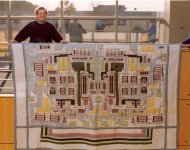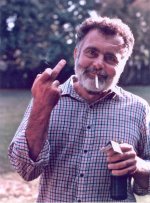Coco Bollo is really related to poison oak and it is the same type of reaction. I found that out the hard way also and always wear gloves and long sleeves now when I work with it. Bonding it to itself to make larger pieces is a real pain and dowels or biscuits are the preferred method of assembly. I use West Systems epoxy to bond it together, it works with oily woods such as teak.
Thank you Ed for explaining this number.
My tests there had to do with 78xx too.
For these regulators, keep the Vin to Vout a minimum of 5V.
For PSU capacitance, see some good work from gootee (this post and on) http://www.diyaudio.com/forums/power-supplies/216409-power-supply-resevoir-size-183.html#post3417188
George
Thank you Ed for explaining this number.
My tests there had to do with 78xx too.
For these regulators, keep the Vin to Vout a minimum of 5V.
For PSU capacitance, see some good work from gootee (this post and on) http://www.diyaudio.com/forums/power-supplies/216409-power-supply-resevoir-size-183.html#post3417188
George
George,
You are welcome. The reference you gave on capacitor rating is an interesting method. It is not the way I do it. It is important to allow for line voltage extremes, a few hundred milli-ohms of AC line resistance, power transformer equivalent resistance, diode droop and ripple.
Ripple is more of a linear slope due to the almost constant current draw. Do C dv/dt = I works well for the discharge drop. The charging time gets more interesting due to the rise in transformer output voltage as the capacitor charges.
But is a nice example of good math.
ES
Ah, yes: "Binary? Any idiot can count up to one!"And then there's Bob Widlar's general opinion.
R.I.P.
Op-Amp Problems ?....
Hello John.
We all know that the typical recording process typically involves passing audio signal through many amplifier stages until the signal is encoded onto a storage medium, generally tape, vinyl or digital.
In the typical playback process, the recovered signal is processed through several low level amplifier stages before being presented to power amplifiers and then reproduced by acoustic transducers of one sort or another.
The recording and storage processing can involve tube, discrete or op-amp stages, ditto playback signal can be passed through tube, discrete or op-amp stages, each low level amplifier type having individual characteristics.
What do you perceive as the 'problems' with op-amp stages ?....is it high levels of global feedback, thermal/mutual coupling of ic circuit elements, internal excess noise generation....or what ?.
Objective information would be good, and your subjective opinion is equally valuable please.
Thanks, Dan.
Hello John.
We all know that the typical recording process typically involves passing audio signal through many amplifier stages until the signal is encoded onto a storage medium, generally tape, vinyl or digital.
In the typical playback process, the recovered signal is processed through several low level amplifier stages before being presented to power amplifiers and then reproduced by acoustic transducers of one sort or another.
The recording and storage processing can involve tube, discrete or op-amp stages, ditto playback signal can be passed through tube, discrete or op-amp stages, each low level amplifier type having individual characteristics.
What do you perceive as the 'problems' with op-amp stages ?....is it high levels of global feedback, thermal/mutual coupling of ic circuit elements, internal excess noise generation....or what ?.
Objective information would be good, and your subjective opinion is equally valuable please.
Thanks, Dan.
There are dozens of potential problems with IC's. All we can do is minimize them the best that we can. For example, the JC-3 phono stage (made with IC's) is a bargain, BUT it is not as good as my discrete phono designs. I would not expect it to be.
When I asked Bob Widlar about using IC's for audio back in 1974, at an ISSCC Conference, he directly stated that IC's (up to that time) were NOT the best that could be done for audio circuits. He knew the tradeoffs, probably better than most IC designers at the time.
Of course, IC's have improved, BUT they still have the same residual problems that Bob Widlar knew about intimately.
When I asked Bob Widlar about using IC's for audio back in 1974, at an ISSCC Conference, he directly stated that IC's (up to that time) were NOT the best that could be done for audio circuits. He knew the tradeoffs, probably better than most IC designers at the time.
Of course, IC's have improved, BUT they still have the same residual problems that Bob Widlar knew about intimately.
OPAs are bad for audio. Dot.
Why ?
"For several reasons."
Please elaborate.
Thanks, Dan.
"There are dozens of potential problems with IC's."Please elaborate.
"they still have the same residual problems that Bob Widlar knew about intimately".
Don't you know Bob Widlar intimately ?
(May-be the black plastic of the OPA's case eat the high-end part of the sound ? Why not a golden case ?)
Last edited:
Problems?
Such as?
With such a blanket statement I can state tubes have dozens of potential problems: like aging, making heat, micro-phonic, bulky, needing high voltages etc. etc.
"There are dozens of potential problems with IC's."
Such as?
With such a blanket statement I can state tubes have dozens of potential problems: like aging, making heat, micro-phonic, bulky, needing high voltages etc. etc.
Such as?
With such a blanket statement I can state tubes have dozens of potential problems: like aging, making heat, micro-phonic, bulky, needing high voltages etc. etc.
Look 6 or 7 posts back. This was JC's statement...
jan
It was 100,01 % ironic. When J.C. get bored, he comes back with one of his old sea snakes, swimming in circle.Such as?
No justifications, just dropped names instead of technical arguments.
Now we are ready for 123 pages of comments about the last OPA: The infamous 741 !
May-be w'll have the luck to discover some exotic measurements of TIM and will have some controversies about the Scott's baby (witch measure fantastic but is not good for audio, neither
Last edited:
Max Headroom, you asked me a question. I thought that you deserved an answer. I gave you a short answer, based on my history and experience with IC's.
I started working with IC's in 1966, when a girlfriend, who worked for Bob Widlar, gave me some uA702's and uA709's off the assembly line at Fairchild, where she worked at the time. Within 3 months, I had a professional position where I supervised techs to build a linear IC tester at Friden Singer, in order to evaluate a number of 709's that would be used in a classified project. My job was to evaluate each and every one of 30 uA709's, then with a nominal cost of $100 each, for linearity, offset, and operation over the full temperature range of -40 to +125 degrees C. I even compared two different vendors: Fairchild and TI to see if they were actually compatible.
The next year, while at Ampex, I took an after hours-course on IC design, where I saw the problems with fabrication. Still, I had hoped that IC's would keep improving, until they replaced just about everything in quality audio. I even thought that an IC might be developed to make a pre-preamplifier for MC cartridges, but Ortofon thought differently and showed me the door in 1967.
Of course, most of you were in grade school at the time.
Later, in 1969, I used uA741's by the hand-full in transport servo designs at Ampex Research for a prototype VCR. I really liked uA741's compared to uA709's. They were simpler to get working, short circuit proof, self compensated, and were difficult to break. They were PERFECT for servo design. However, they were too noisy, and too slow for analog design, and we all knew it at the time.
I made my first all IC studio board design in 1980, not with uA741's but with Harris Associates HA911, dielectrically isolated parts, made for Radiation hardened application.
The HA911, was quieter, 50 ma output, +/- 24V operation, rated for 600 ohms. It was also 5 times faster than a uA741 at +5/-2.5 V/us, to me, at the time, fast enough for audio. It was only when the studio board, after operating for some period of time with the GD, was ultimately rejected, and they went back to vacuum tubes for mixing, that I was forced to 'wake up' and find other solutions. Now if the rest of you will 'wake up' then you can go on the same journey that I started on 42 years ago. '-)
Now, don't get me wrong, I use IC's in analog designs, just not my BEST DESIGNS. They are always jfet and mosfet based, and that will probably continue for the rest of my years, to be sure.
I started working with IC's in 1966, when a girlfriend, who worked for Bob Widlar, gave me some uA702's and uA709's off the assembly line at Fairchild, where she worked at the time. Within 3 months, I had a professional position where I supervised techs to build a linear IC tester at Friden Singer, in order to evaluate a number of 709's that would be used in a classified project. My job was to evaluate each and every one of 30 uA709's, then with a nominal cost of $100 each, for linearity, offset, and operation over the full temperature range of -40 to +125 degrees C. I even compared two different vendors: Fairchild and TI to see if they were actually compatible.
The next year, while at Ampex, I took an after hours-course on IC design, where I saw the problems with fabrication. Still, I had hoped that IC's would keep improving, until they replaced just about everything in quality audio. I even thought that an IC might be developed to make a pre-preamplifier for MC cartridges, but Ortofon thought differently and showed me the door in 1967.
Of course, most of you were in grade school at the time.
Later, in 1969, I used uA741's by the hand-full in transport servo designs at Ampex Research for a prototype VCR. I really liked uA741's compared to uA709's. They were simpler to get working, short circuit proof, self compensated, and were difficult to break. They were PERFECT for servo design. However, they were too noisy, and too slow for analog design, and we all knew it at the time.
I made my first all IC studio board design in 1980, not with uA741's but with Harris Associates HA911, dielectrically isolated parts, made for Radiation hardened application.
The HA911, was quieter, 50 ma output, +/- 24V operation, rated for 600 ohms. It was also 5 times faster than a uA741 at +5/-2.5 V/us, to me, at the time, fast enough for audio. It was only when the studio board, after operating for some period of time with the GD, was ultimately rejected, and they went back to vacuum tubes for mixing, that I was forced to 'wake up' and find other solutions. Now if the rest of you will 'wake up' then you can go on the same journey that I started on 42 years ago. '-)
Now, don't get me wrong, I use IC's in analog designs, just not my BEST DESIGNS. They are always jfet and mosfet based, and that will probably continue for the rest of my years, to be sure.
- Status
- Not open for further replies.
- Home
- Member Areas
- The Lounge
- John Curl's Blowtorch preamplifier part II

